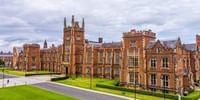What is computational art?
Computation consists of all the changes brought about by digital technology. Art is an open set of ways of acting inventively in culture. Mixing the two together in a systematic way gives us computational art. This is a very open field, and one that is set to expand enormously in the coming years. It is where the most exciting developments in technology and in culture can already be found. This degree will place you in the middle of this fast-evolving context.
What will I learn?
This Computational Arts degree, offered by Goldsmiths, University of London, develops your arts practice through the expressive world of creative computation. Over a year (full-time) or two years (part-time) you will develop your artistic work and thinking through the challenge of developing a series of projects for public exhibition which will explore the technological and cultural ramifications of computation.Ê
You will learn the fundamentals of programming and how to apply this knowledge expressively. You will work with popular open source programming environments such as Processing, OpenFrameworks, P5.js and Arduino, and will learn how to program in languages such as Java, Javascript and C++.Ê
Since computational artworks donÕt necessarily involve computers and screens, we also encourage students to produce works across a diverse range of media. Supported by studio technicians in state-of-the-art facilities, our students are producing works using tools such as 3D printers, laser cutters, robotics, wearable technologies, paint, sculpture and textiles.Ê
You will also study contextual modules on computational art and the socio-political effects of technology. These modules provide students with the historical foundations, frameworks, critical skills and confidence to express their ideas effectively. You will have the opportunity to learn the cultural histories of technology, to reflect on computation in terms of its wider cultural effects, and to understand the way in which art provides rigorous ways of thinking.Ê
Through our masterclass series, we regularly invite world-class artists and curators to explain their work and engage in critical dialogue with the students. This allows you to develop a wider understanding of the contemporary art scene and how your work sits within the professional art world.












